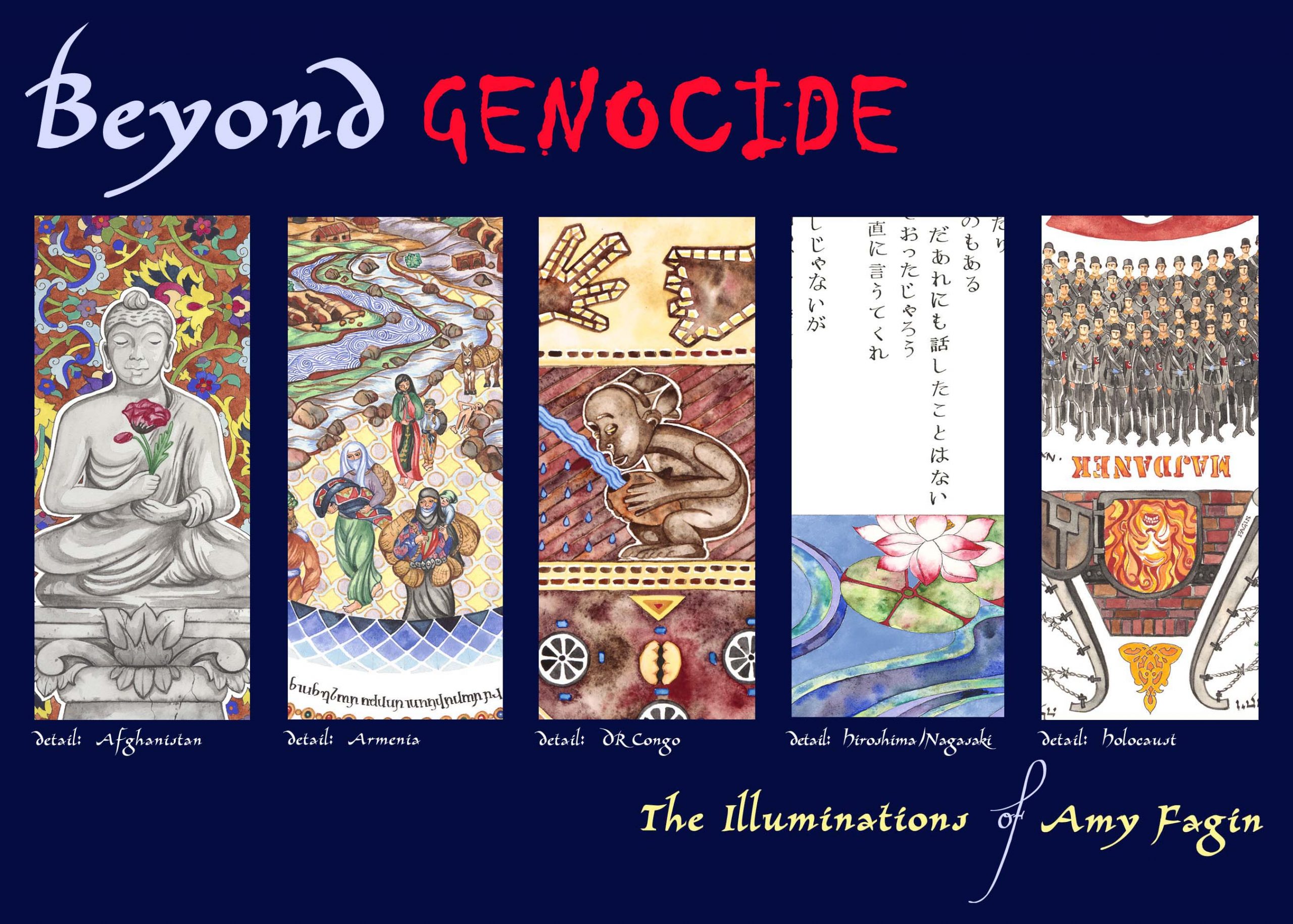on digital space
The implementation of digital technology into arts / aesthetic expression and experience represents a burgeoning constellation of disciplines which has revolutionized arts production, distribution, curation, and viewer / listener experiences. Combined with digital platforms for testimony, documentation and story based digital learning the impact on the “culture-conflict” interface is nothing short of revolutionary. First and foremost, digital platforms improve access and accessibility to information / objects and performances and the potential for spatially condensed dialogue. Bringing artifacts to light with augmented reality tools greatly enhances the dimensions of learning through layered, immersive, experiential interface. Gaming technology offers constructed immersion experiences with disparate geographical locations, cultures and histories challenging more static conceptions of all aspects of life.
Creating the Witness: Documenting Genocide on Film, video, and the Internet: “examines the role of film and the Internet in creating virtual witnesses to genocide over the past one hundred years. Leshu Torchin’s broad survey of media and the social practices around it investigates the development of popular understandings of genocide to achieve recognition and response, ultimately calling on viewers to act on behalf of human rights.” (Univ. of Minnesota Press)
Mass Violence and Memory in the Digital Age: “This volume explores the shifting tides of how political violence is memorialized in today’s decentralized, digital era. The book enhances our understanding of how the digital turn is changing the ways that we remember, interpret, and memorialize the past. It also raises practical and ethical questions of how we should utilize these tools and study their impacts. Cases covered include memorialization efforts related to the genocides in Rwanda, Cambodia, Europe (the Holocaust), and Armenia; to non-genocidal violence in Haiti, and the Portuguese Colonial War on the African Continent; and of the September 11 attacks on the United States.” (Palgrave Macmillan)
“Holocaust Memory in the Digital Age: Survivor’s Stories and New Media Practices: This volume examines the nexus of new media and memory practices through an in-depth study of the Shoah Visual History Archive, the world’s largest and most widely available collection of video interviews with Holocaust survivors, to understand how advances in digital technologies impact the practice of Holocaust remembrance.” (Stanford Studies in Jewish History)
Cummings Foundation Resource Links on Holocaust and Genocide: This web based directory, operating under the Cummings Foundation branch “Institute for World Justice” supports institutions devoted to genocide education and prevention. Links include a comprehensive digital resource data base to agencies working in 37 conflict regions of the world.
USHMM International Tracing Service Digital Archive: “The Arolsen Archives, formerly the International Tracing Service archive (ITS), located in Bad Arolsen, Germany, was opened for research in 2007. The archives are overseen by an 11-nation International Commission comprised of Belgium, France, Germany, Greece, Israel, Italy, Luxembourg, the Netherlands, Poland, the United Kingdom, and the United States. The US Holocaust Memorial Museum is designated as the national repository for the ITS Digital Archive in the United States. The collection contains more than 200 million digital images of documentation on millions of victims of Nazism—people arrested, deported, killed, put to forced labor and slave labor, or displaced from their homes and unable to return at the end of the war.” (USHMM)
Digital Cultures and the Politics of Emotion: “Fifteen thought-provoking essays engage in an innovative dialogue between cultural studies of affect, feelings and emotions, and digital cultures, new media and technology. The volume provides a fascinating dialogue that cuts across disciplines, media platforms and geographic and linguistic boundaries.” (Springer Publishing)
The Era of the User: Testimonies and the Digital Age: This article elaborates on the concerns new technologies of dissemination, which have become ubiquitous by now: searchable online portals to video testimony collections. These testimony portals have two important characteristics: they ‘force’ users to choose from a large number of testimonies; and they reconfigure the relation between witness and audience. A different approach to testimonies has emerged, in which the user is central, not the witness. The article substantiates the notion that we have entered a new phase in public memory of the Holocaust and the Second World War: that of the ‘era of the user’.
Genocide, Memory, Digital Cultures and the Aesthetization of Violence: This article approaches the complexities of interactive opportunities and illusions that the digitization of memory, mass violence, consumption and aesthetic perspectives have over objective representation and interpretation.
Politics and Art: “Art can be understood as a form of political discourse; as a descriptive, an interpretive, or an explicitly critical approximation; or as a vehicle with which to transcend the political. Art complicates our understandings and perceptions of the world, altering the discursive frames within which the political is negotiated. Research on politics and art explores art’s engagement with politics and its vision of the world; it analyzes art’s contribution to both our understanding of politics and problem solving. Current research also explores art’s critical and emancipatory potentialities, as well as participatory art and social activism in light of new forms of political communication. Such research is interdisciplinary and open to methodological pluralism and innovation. This article discusses artistic and performative imaginations of the political; knowledge production through art; art’s engagement with violence and peace; the art-audience interface; ethics and aesthetics of political art; and art’s function as a political witness.” (Oxford Online handbooks)




